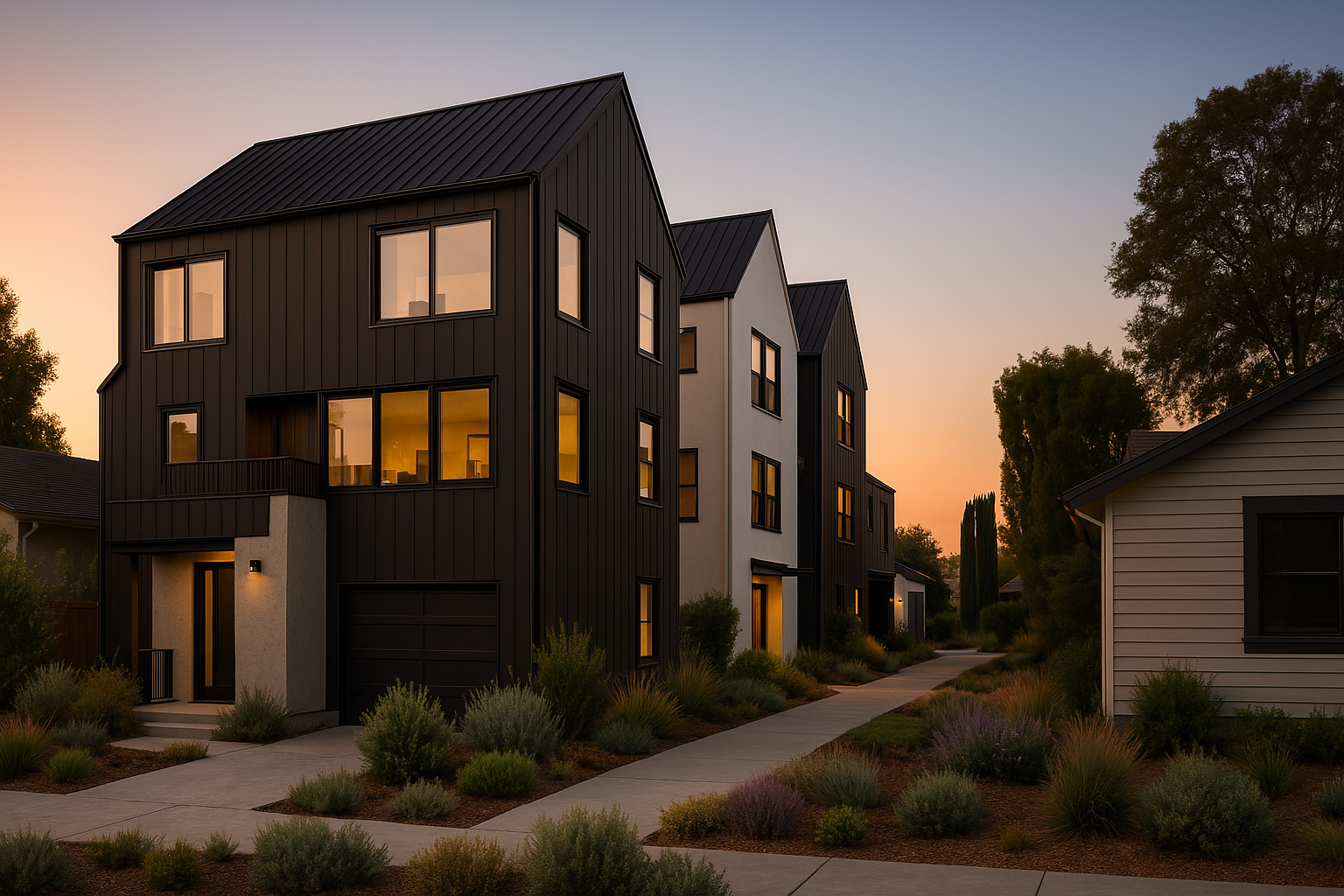THINKING: housing
Unlocking Housing Opportunities with SB 684 and SB 1123

California’s housing shortage has been a persistent challenge, with a deficit of nearly 3.5 million homes statewide. This crisis is not just a numbers game; it’s a reflection of systemic regulatory and zoning barriers that have long hindered innovative, small-scale developments. SB 684 and SB 1123 aim to tackle these obstacles by refining and expanding opportunities for urban housing projects. These bills signal a shift that can reshape how we approach infill housing and lot utilization across California’s cities.
How Does SB 684 Streamline Housing Approvals?
SB 684 (also known as the Starter Homes Act) streamlines the approval process for housing developments on urban lots up to 5 acres, offering a clear framework for smaller-scale projects. The law dictates that jurisdictions must allow lot splits or parcel maps to create up to ten for sale units on existing multifamily zoned lots. Newly created parcels must be at least 600 square feet, with local agencies permitted to adopt smaller minimum sizes by ordinance.
A variety of ownership structures are possible under this legislation. Homes may be:
- Constructed on fee simple ownership lots.
- Part of a common interest development.
- Part of a housing cooperative.
- Owned by a community land trust.
Development Standards
To ensure consistency and protect community interests, SB 684 includes a set of development standards that are designed to maintain livability while removing common barriers to small-scale infill development.
- Floor Area: Average total floorspace for proposed units must not exceed 1,750 net habitable square feet.
- Tenant Protections: Prohibits developments that require demolition or alteration of housing that is:
- Subject to affordability restrictions.
- Rent-controlled.
- Occupied by tenants within the five years preceding the application.
- Limited Setbacks: SB 684 prohibits local agencies from imposing side or rear setbacks from the original property line beyond 4 feet. Setbacks for existing structures or structures constructed in the same location with the same dimensions as an existing structure are also prohibited.
- Building Separation: No zoning setbacks or other building separation requirements between units may be enforced, except for those required by the California Building Code.
The ministerial (non-discretionary) approval process eliminates delays caused by lengthy hearings and discretionary reviews, allowing architects and developers to focus on design and execution rather than navigating bureaucratic hurdles.
This also creates opportunities to think creatively about underutilized spaces, enabling innovative solutions that balance density, livability and aesthetics.
New Opportunities for Vacant Lots and Ownership Models with SB 1123
SB 1123 builds on the foundation of SB 684 by addressing gaps and expanding applicability. In particular, it extends streamlined approvals to vacant lots zoned for single-family residential use, provided they are no larger than 1.5 acres and meet urban adjacency requirements. This addresses longstanding barriers in areas where single-family zoning has constrained opportunities for higher-density solutions. With a minimum parcel size of 1,200 square feet for these lots, SB 1123 enables more thoughtful site planning, including opportunities for clustered housing, shared open spaces, or staggered layouts that enhance privacy and natural light.
The clarification that ADUs and junior ADUs do not count toward the 10-unit cap is another critical piece of this legislation. This allows for increased density while maintaining compliance with local housing goals.
Additionally, SB 1123 introduces tenancy in common as a permissible ownership model, allowing multiple individuals to hold shares in a property while sharing rights to the entire space. This provision supports flexible housing arrangements like co-living spaces and shared housing, aligning with the legislation’s goal of broadening housing opportunities and addressing affordability.
How These Bills Build on SB 9
SB 9, passed in 2021, laid the groundwork for urban lot splits in single-family zones, allowing up to four units per lot. While SB 9 was a landmark shift in its own right, it had limitations in scope and scale. SB 684 and SB 1123 expand on its principles by addressing multifamily and vacant lots, increasing the unit threshold to 10, and providing clearer pathways for streamlined approvals.
SB 9 has had limited impact, as it requires owner occupancy and additional units are usually limited to a size that is not financially feasible to build. SB 684 and 1123 are much less restrictive and also allow more than four units, which should make this pathway much more attractive to property owners.
From Policy to Progress in Urban Housing
California’s housing crisis has underscored the urgent need for solutions that address the state’s regulatory and zoning barriers. Senate Bills 684 and 1123 tackle these challenges by introducing streamlined processes for small-scale housing developments, transforming underutilized and vacant lots into productive urban spaces. Together, these bills reflect a shift in housing policy that prioritizes efficiency, adaptability, and equity.
At OpenScope Studio, we help our clients navigate legislative changes and turn challenges into opportunities. Whether you’re planning an infill project, exploring ownership models, or rethinking how to utilize vacant lots, our team brings the expertise to make it happen. To learn how we can help bring your project to life, email info@openscopestudio.com or call (415) 891-0954 and get in touch with our team today.